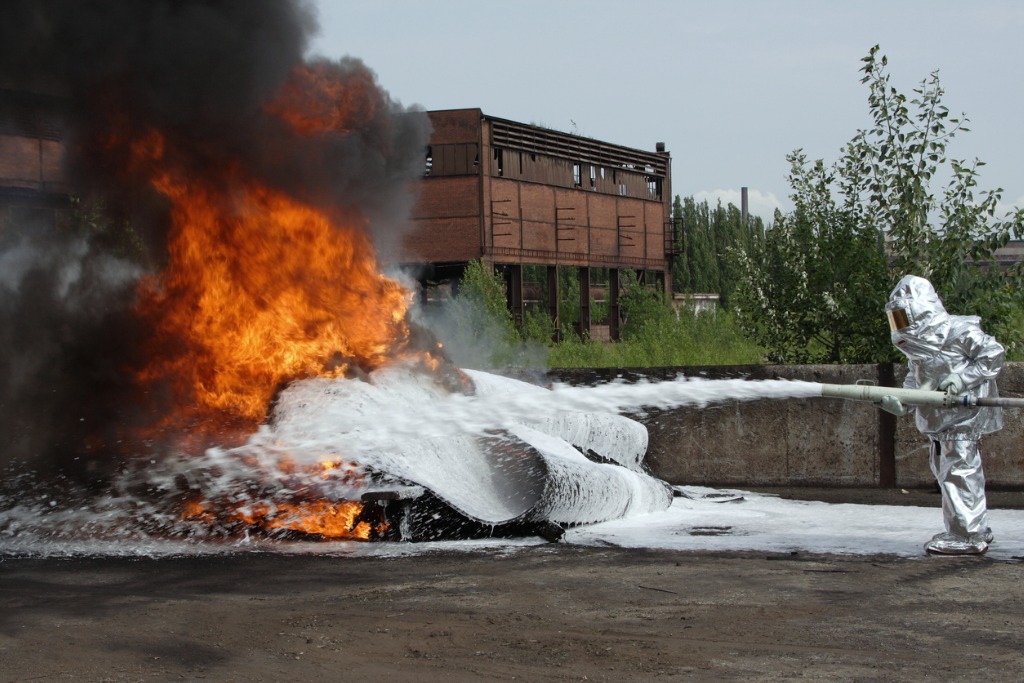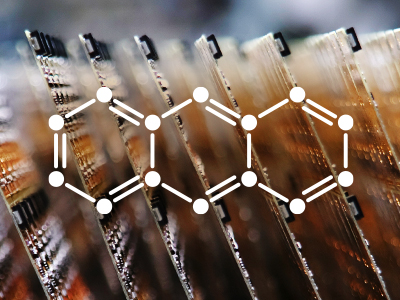Perfluoroalkyl and Polyfluoroalkyl Substances, often abbreviated as Per- and polyfluoroalkyl substances, or PFAS, are a large, complex group of synthetic chemicals that have been used in a wide range of consumer and industrial products. PFAS are facing increased public and regulatory scrutiny because of their potential risk to human health and the environment. The electronics industry must examine its supply chain to better understand where PFAS exists, how it is used, what properties they are used for, and whether alternatives exist.
History and Background of PFAS
The first PFAS were invented in the 1930s and were the main ingredients in nonstick and waterproof coatings, according to the Interstate Technology and Regulatory Council (ITRC). In the early 1940s, PFAS (mostly PFOA and PFOS) became widely used in household products and industrial settings. These chemicals were also historically used in firefighting foams due to their effectiveness at quickly extinguishing petroleum-based fires because of their unique ability to repel oil, grease, water, and heat. Development of these chemicals increased in the late 1960s after a deadly fire aboard a US Navy aircraft carrier, the USS Forrestal, in 1967.
PFAS are found in water, air, fish, and soil at locations across the globe. Scientific studies have shown that exposure to some PFAS in the environment may be linked to harmful health effects in humans and animals.

Products that contain PFAS
PFAS have been used in industry and consumer products for applications ranging from firefighting to stain- and waterproofing. Below are several example uses for PFAS:
- Non-stick cookware
- Grease-resistant paper
- Cleaning products
- Stain-resistant coatings used on carpets, upholstery, and other fabrics
- Water-resistant clothing
- Heat-resistant paper and cardboard food packaging (like microwave popcorn and pizza boxes)
- Personal care products (shampoo, dental floss, nail polish, and eye makeup)
- Heat-resistant electrical insulation
- Non-reactive lubricants (oil, grease)
- Fuel-, oil-, and chemical-resistant components
- Oxygen sensors and related ‘breathable’ membranes
- Evaporation barriers (e.g., plating tanks)
- Antifogging coatings and wipes
- On packaging (e.g., for engine parts)
Sources of Environmental PFAS
The major sources of PFAS contamination in drinking water, groundwater, soils, and air include:
- Fire training/fire response sites
- Industrial sites
- Landfills
- Wastewater treatment plants and resulting biosolids
Impacts on Human Health
PFASs are known as “forever chemicals” because they are highly persistent in the environment and the human body. PFAS can build up in the body, leading to potential health risks such as liver damage, thyroid disease, obesity, fertility issues, and cancer. Research and studies have shown some effects such as changes in development, liver and thyroid function, immune response, and increased liver and kidney weight as well as cellular changes. Increased tumors were also observed in certain organs in animals exposed to very high doses of PFOA (perfluorooctanoic acid).
Potential Pathways of Exposure
Because children are still developing, they may be more sensitive to the harmful effects of PFAS. They can also be exposed more than adults because children drink more water, eat more food, and breathe more air per pound of body weight than adults. Pregnant and lactating women tend to drink more water per pound of body weight than the average person and may also have higher PFAS exposure compared to other people if it is present in their drinking water.
Drinking water is a primary exposure pathway for PFAS contamination everywhere. PFAS pollution has been identified in surface water in several countries across the EU, including Austria, Denmark, France, Germany, the Netherlands, and Sweden, as well as outside the EU.
Professions that handle large amounts of PFAS-containing waste represent another potential exposure pathway. For example, PFAS exposure during e-waste handling can result in measurable human health effects. Urine, serum, and hair samples from e-waste workers showed elevated PFAS levels according to a study entitled “Occurrence of PFASs in human matrices”.
Classification of PFAS
The general classification of per- and polyfluoroalkyl substances (PFASs) is based on commonly agreed terminology for the nomenclature of PFASs. This classification is produced by the Organization for Economic Cooperation and Development (OECD). The OECD is an intergovernmental organization in which representatives of 36 industrialized countries in North & South America, Europe, Asia Pacific region, as well as the European Commission, meet to co-ordinate and harmonize policies, discuss issues of mutual concern, and work together to respond to international problems. Most of the OECD’s work is carried out by more than 200 specialized committees and working groups composed of member country delegates.
PFAS are classified as either non-polymers o polymers.
(i) Non-Polymers :
- Perfluoroalkyl acids (PFAAs)
- perfluoroalkyl carboxylic acids (PFCAs)
- perfluoroalkyl sulfonic acids (PFSAs)
- perfluoroalkyl phosphonic acids (PFPAs)
- perfluoroalkyl phosphinic acids (PFPiAs)
- polyfluoroalkane sulfonyl fluoride (PASF) – PASF based substances.
- Perfluoroalkyl Iodidies (PFAis)
- Fluorotelomer Iodidies (FTis)
- Fluorotelomer substances
- per- and polyfluoroalkyl ether-based substances
- per- and polyfluoroether carboxylic acids (PFECAs)
- per- and polyfluoroether sulfonic acids (PFESAs)
(ii) Polymers
- Fluoropolymers (FPs)
- polytetrafluroethylene (PTFE)
- poluvinylidene fluoride (PVDF)
- fluorinated ethylene propylene (FEP)
- perfluoroalkoxyl polymer (PFA)
- polyvinyl fluoride (PVF)
- Side-chain fluorinated polymers (FPs)
- fluorinated (meth)acrylate polymers
- fluorinated urethane polymers
- fluorinated oxetane polymers
- Perfluoropolyethers (PFPEs)
Most Common PFAS and Their Uses
PFAS are used as process aids in the manufacturing of semiconductors, used as soldering agents and used as flame-retardants to reduce the risk of fire.
1. Polytetrafluoroethylene (PTFE) – Used in a wide range of applications, such as seals including PTFE ‘O’ rings, PTFE gaskets, valves, wire insulation, insulated transformers, bearings, surface coatings, chemical processing equipment.
2. Perfluorooctanoic acid (PFOA) – Used primarily as a fluoropolymer processing aid and surfactant. Its salts are also widely used as coating agents and materials for semiconductor manufacturing. It is an indispensable chemical for the Teflon coating of frying pans and the water-repellent coating of various products.
3. Perfluorooctanesulfonic acid (PFOS) – Used in stain-resistant fabrics, fire-fighting foams, and food packaging.
4. GenX – Chemours trademark name for a synthetic, short-chain organofluorine chemical compound, an ammonium salt of hexafluoropropylene oxide dimer acid (HFPO-DA)
5. Polytetrafluoroethylene (ePTFE) – Used to produce a mesh-like structure for medical implants. Allows tissue to grow seamlessly into it, making it an excellent material for use in vascular grafts and other reconstructive surgery.
6. Polyvinylidene fluoride (PVDF) – Commonly used as insulation on electrical wires, because of its combination of flexibility, low weight, low thermal conductivity, high chemical corrosion resistance, and heat resistance.
7. Polyvinyl fluoride (PVF) – Mainly used in the flammability-lowering coatings of airplane interiors and photovoltaic module backsheets. Also used in raincoats and metal sheeting.
8. Polychlorotrifluoroethylene (PCTFE) – Used to protect sensitive electronic components because of its excellent electrical resistance and water repulsion. Other uses include flexible printed circuits and insulation of wires and cables.
9. Fluorinated ethylene propylene (FEP) – Used in biomedical devices in place of PTFE due to its maximum service temperature of 204°C, and a slightly higher coefficient of friction than PTFE.
10. Fluoroelastomers – Used mainly in seals and barrier layers subjected to environments too severe for other elastomers.
How to Reduce Exposure to PFAS
PFAS are a serious threat to human health, with some known to cause adverse health effects including cancer. Because they are so prevalent, humans are frequently exposed to these substances whether they know it or not. We can, however, take meaningful steps as individuals and companies to reduce our exposure to PFAS where possible.
- Check product labels for ingredients that include the words “fluoro” o “perfluoro”
- Be aware of food packaging that contains grease-repellent coatings
- Avoid or reduce the use of non-stick cookware
- Follow guidelines for eating fish from contaminated water sources
- Mothers of infants can consider breastfeeding to reduce the need for packaged baby food
- Companies can identify PFAS in supply chains and work to eliminate them
- Stay up to date on the latest regulations
- Redesign the products to use alternative substances where possible
Conclusion
As the potential risks posed by PFAS become more clear, the electronics industry must adapt product designs and supply chains accordingly. In our next article, we will investigate PFAS regulation and how electronics companies can prepare for potential bans of these substances.




